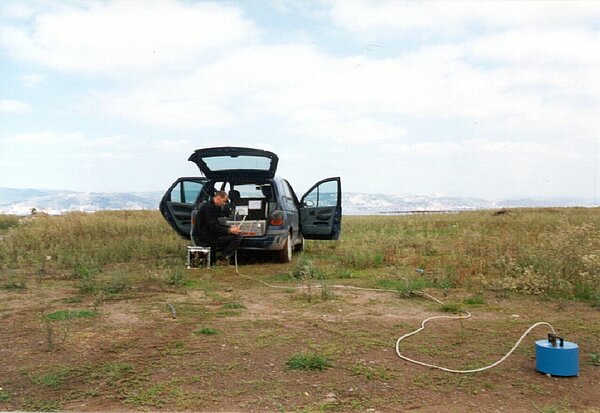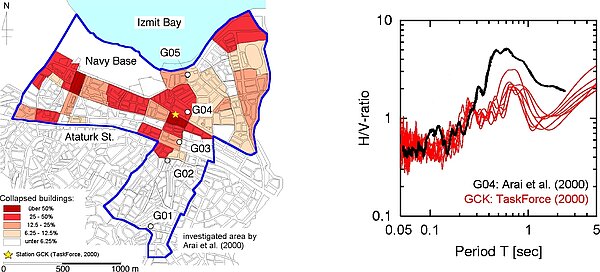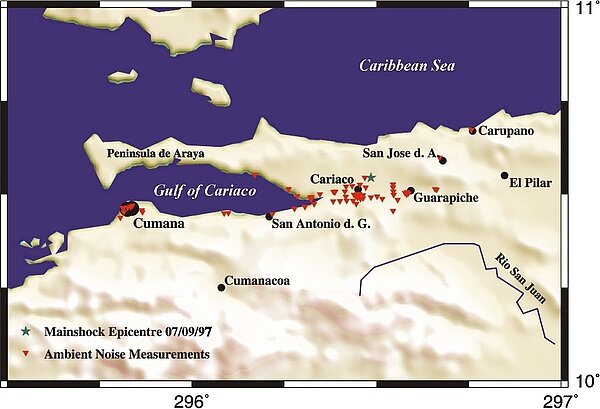Standortanalysen und Mikrozonierung
instrumentelle Standortklassifikation

Identifikation des standortabhängigen Verstärkungspotentials

Mikrozonierung von Testgebieten

Literatur
Lang, D.H. (2004): Damage potential of seismic ground motion considering local site effects. Dissertation. Scientific technical reports 1 (2004), Bauhaus-Universität Weimar, 293 pp.
Lang, D.H. and Schwarz, J. (2000): A comparison of site response estimation techniques: Case studies in earthquake-affected areas. Proceedings of the 6th International Conference on Seismic Zonation, Palm Springs/USA, 2000.
Lang, D.H. and Schwarz, J. (2001): Herausarbeitung lokaler Standorteffekte auf der Grundlage von Nachbebenregistrierungen und Aufzeichnungen der seismischen Bodenunruhe. Thesis - Wiss. Zeitschrift der Bauhaus-Universität Weimar, Heft 1./2.: 101--116, 2001.
Lang, D.H., Schwarz, J., and Ende, C. (2002): Reliability of site response estimation techniques. Proceedings of the 12th Conference on earthquake Engineering ECEE, London/UK, Paper 226.

